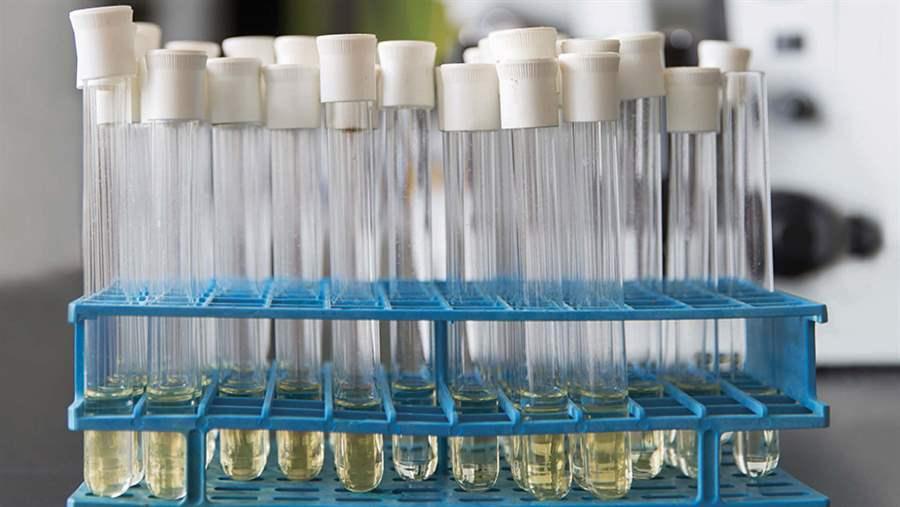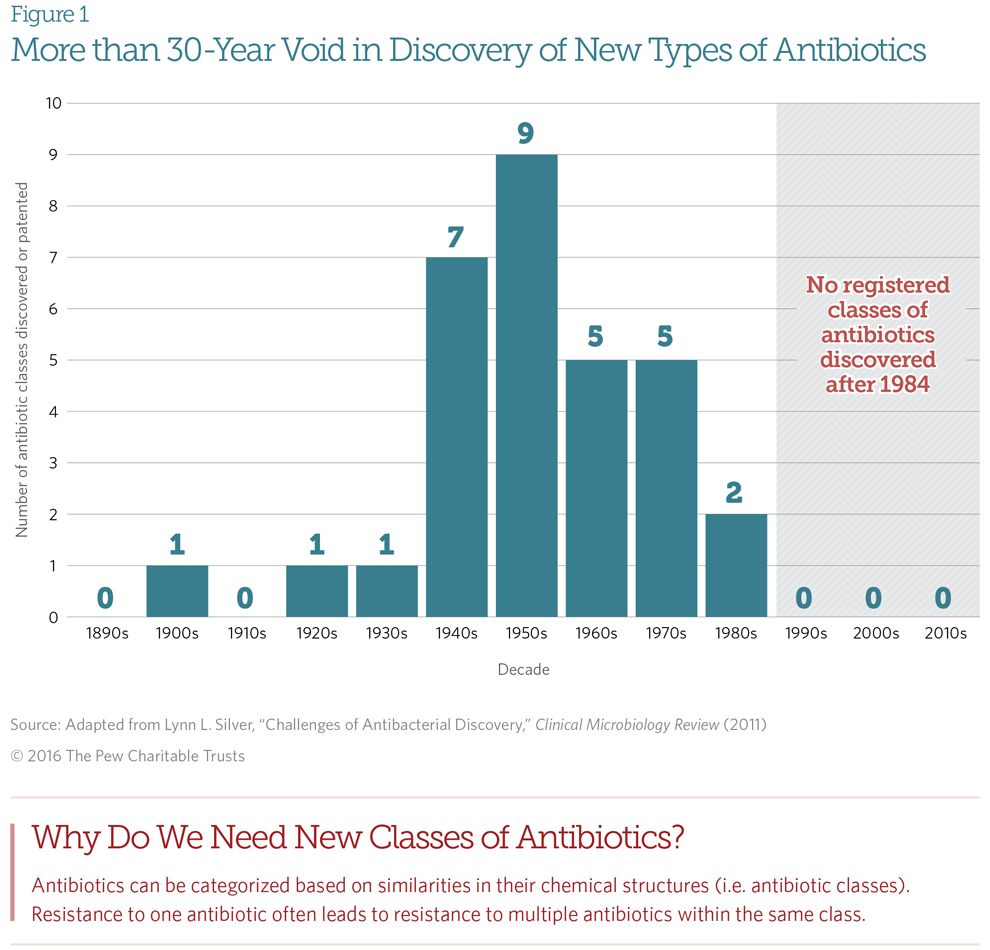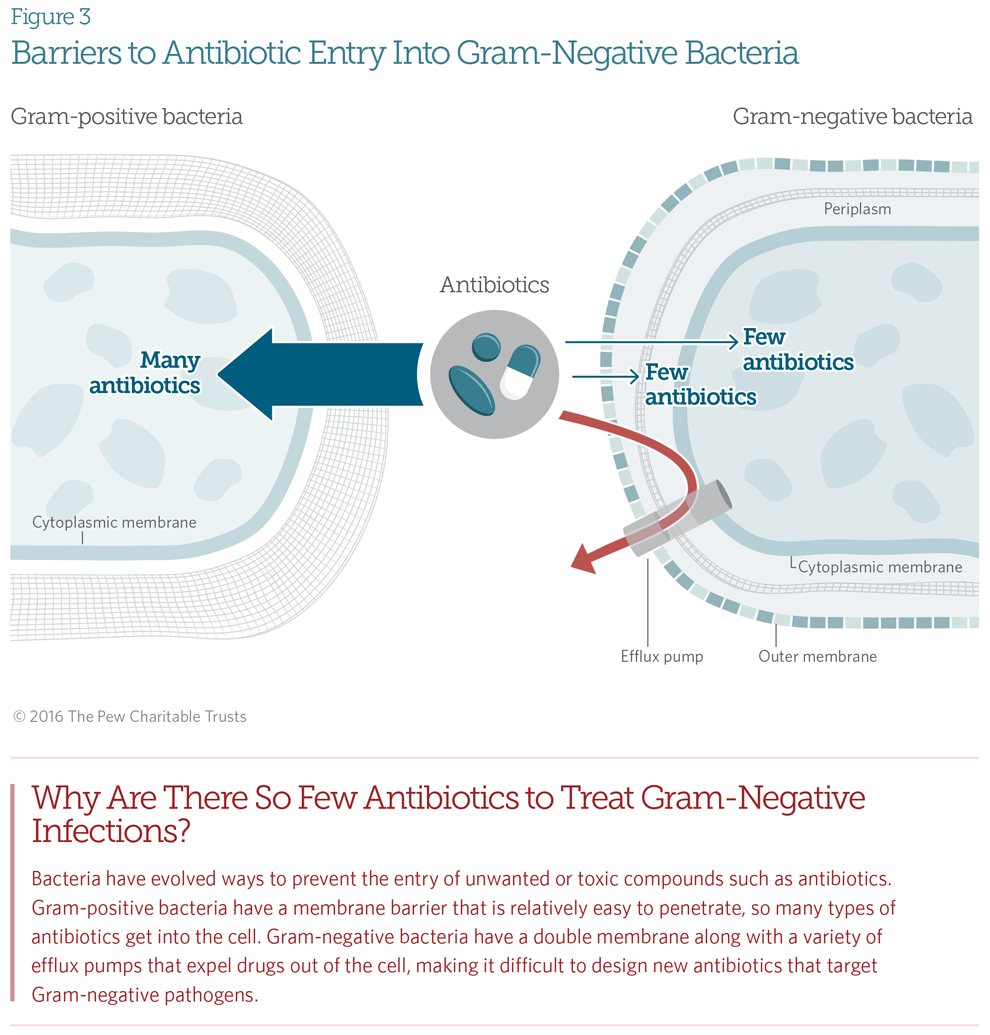A Scientific Roadmap for Antibiotic Discovery
A sustained and robust pipeline of new antibacterial drugs and therapies is critical to preserve public health
 © The Pew Charitable Trusts
© The Pew Charitable TrustsThe roadmap outlines a concrete approach for the discovery of new antibiotics.
Overview
In recent decades, the discovery and development of new antibiotics have slowed dramatically as scientific barriers to drug discovery, regulatory challenges, and diminishing returns on investment have led major drug companies to scale back or abandon their antibiotic research. Consequently, antibiotic discovery—which peaked in the 1950s—has dropped precipitously. Of greater concern is the fact that nearly all antibiotics brought to market over the past 30 years have been variations on existing drugs.1 Every currently available antibiotic is a derivative of a class discovered between the early 1900s and 1984.2
At the same time, the emergence of antibiotic-resistant pathogens has accelerated, giving rise to life-threatening infections that will not respond to available antibiotic treatment. Inevitably, the more that antibiotics are used, the more that bacteria develop resistance—rendering the drugs less effective and leading public health authorities worldwide to flag antibiotic resistance as an urgent and growing public health threat.

Reducing the inappropriate and unnecessary use of antibiotics will help slow this process, but it cannot halt it. Existing antibiotics will continue to lose their effectiveness over time, and patients will continue to need new drugs and therapies. Regulatory policies and economic incentives that encourage antibiotic development are vital; however, it is also critical to address fundamental gaps in basic scientific research that hinder new drug discovery.
The Pew Charitable Trusts convened a multidisciplinary group of leading industry and academic experts to identify the key scientific roadblocks to antibiotic discovery and consulted with numerous other public and private sector stakeholders to develop a Scientific Roadmap for Antibiotic Discovery. The roadmap outlines a concrete approach—both a scientific plan and organizational structure to support this research—that would lay a foundation for the sustained and diversified discovery and development of new antibiotics and therapies over the coming decades.
The report’s key findings show a need for:
- A targeted approach to tackle the basic scientific barriers impeding antibiotic discovery and development.
- A better understanding of how to overcome the cellular defenses of drug-resistant Gram-negative bacteria, which cause some of the most difficult-to-treat infections.
- Generation of new chemical matter designed for antibiotic discovery.
- Tools and methodologies to evaluate promising alternatives to traditional antibiotic use.
- A framework for sharing information, expertise, and materials across the research community to foster innovative science and spur the discovery of novel antibacterial therapies.

Success will require dedicated teams of multidisciplinary scientists to tackle key questions and share knowledge and skills across sectors.
- A core scientific leadership group would set priorities and direct and manage milestone-driven research.
- New methodologies and guidelines for antibiotic discovery generated by this initiative would provide scientists in industry and academia with a foundation to support the discovery of new drugs over a sustained period of time.

If successfully implemented, this initiative has the potential to revitalize innovation in antibiotic research and accelerate the discovery of new types of antibacterial drugs and therapies.
ENDNOTES
- Lynn L. Silver, “Challenges of Antibacterial Discovery,” Clinical Microbiology Reviews 24, no. 1 (2011): 71–109, doi: 10.1128/CMR.00030-10.
- Cynthia C. Knapp and John A. Washington, “Antistaphylococcal Activity of a Cyclic Peptide, LY146032, and Vancomycin,” Antimicrobial Agents and Chemotherapy 30, no. 6 (1986): 938-939, doi: 10.1128/AAC.30.6.938; N. Allen et al., “LY146032 Inhibits the Biosynthesis of Cell Wall Peptidoglycan in Gram-positive Bacteria,” In Program and Abstracts of the 24th Interscience Conference on Antimicrobial Agents and Chemotherapy, p. 281. 1984; F. T. Counter et al., “LY146032 [N-(n-Decanoyl) A21978C nucleus] a New Acidic Lipopeptide Antibiotic: Synthesis and biological evaluation,” In Program and Abstracts of the 24th Interscience. Conference on Antimicrobial Agents and Chemotherapy, no. 1078, p. 281. 1984.


This video is hosted by YouTube. In order to view it, you must consent to the use of “Marketing Cookies” by updating your preferences in the Cookie Settings link below. View on YouTube
This video is hosted by YouTube. In order to view it, you must consent to the use of “Marketing Cookies” by updating your preferences in the Cookie Settings link below. View on YouTube


Pew Releases Scientific Roadmap to Spur Antibiotic Discovery and Innovation
Report proposes approach to end decades-long gap in new antibiotic approval









